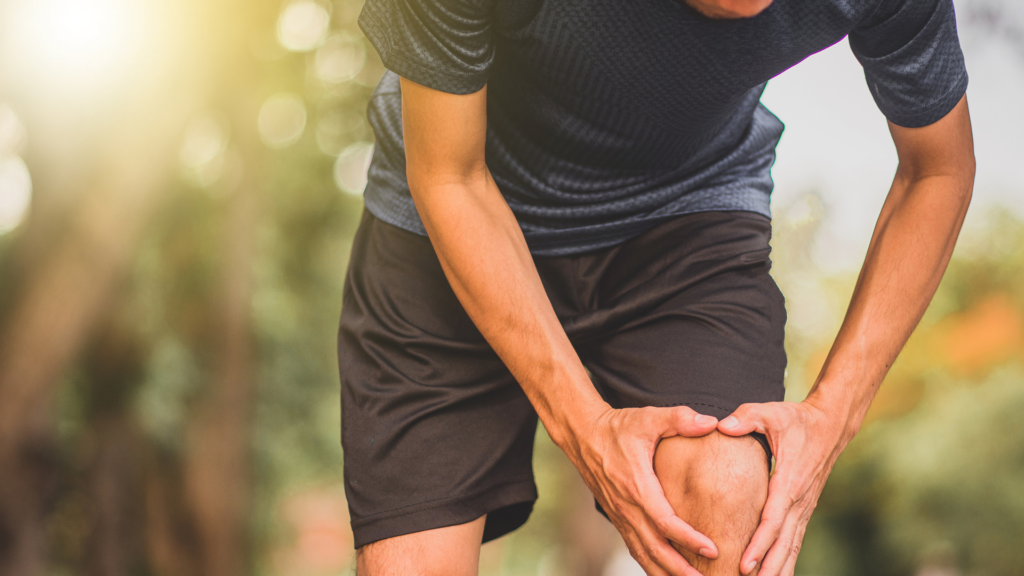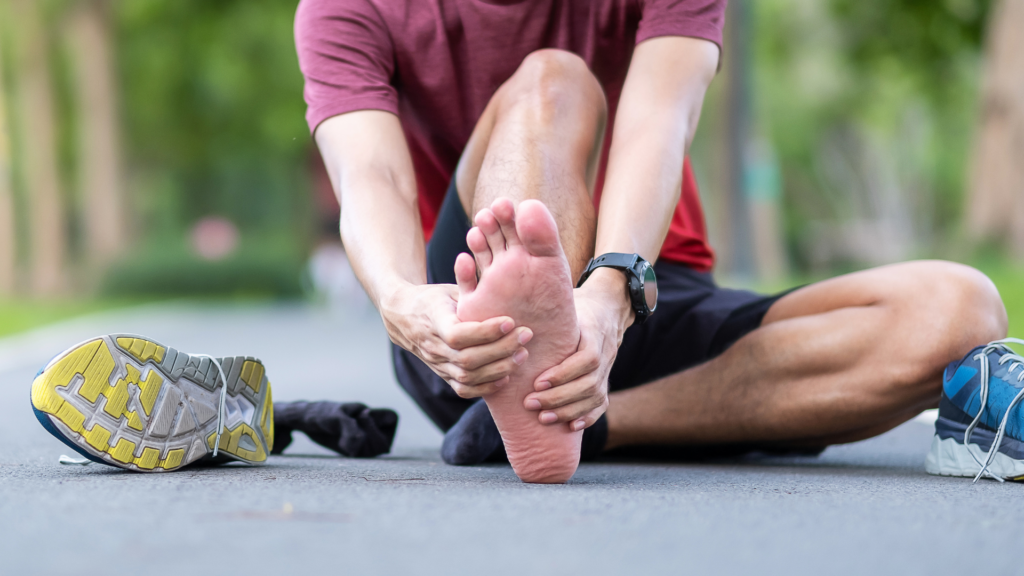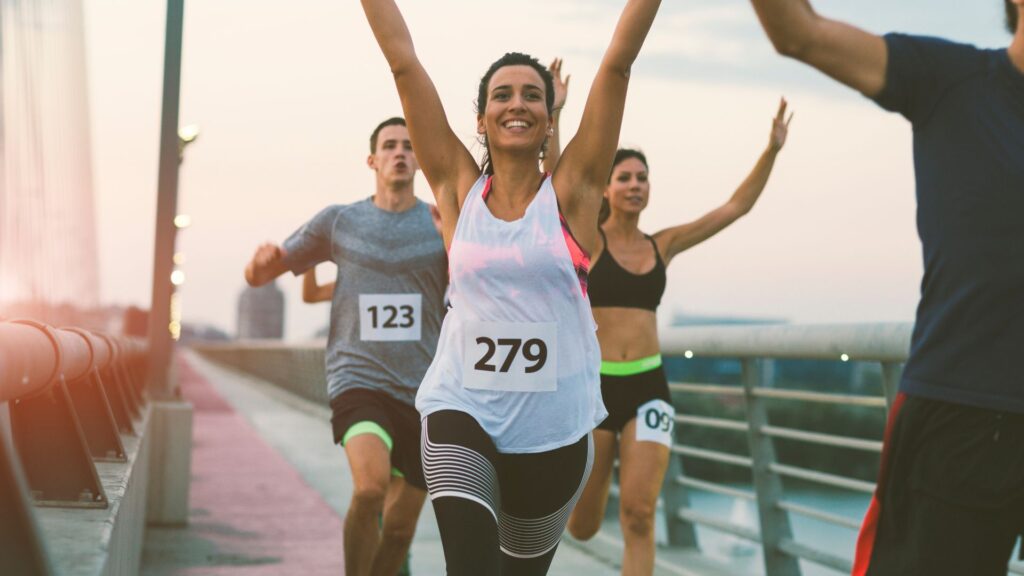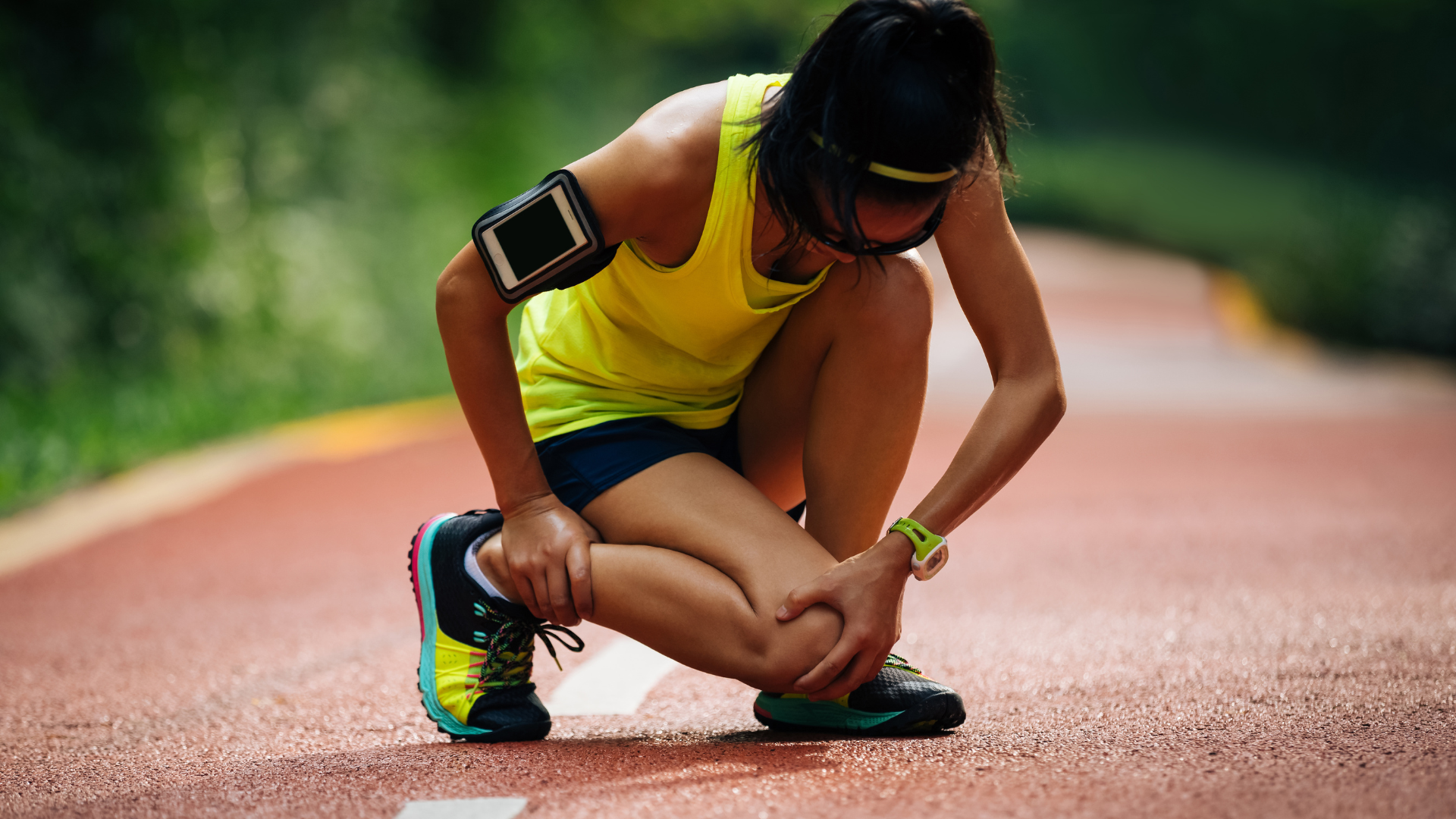Attention Singapore Runners! Before you sign up for Standard Chartered Singapore Marathon, 2XU Compression Run, and Sundown Marathon – STOP if you:
- Feel knee pain after 5km
- Have worn the same shoes for more than 500km
- Skipped strength training
Why? 30% of runners obtain injuries by making these mistakes. Whether you’re a seasoned marathoner or a first-time runner, understanding common injuries, risk factors, and prevention strategies is key to crossing the finish line strong and pain-free!
How Common Are Running Injuries?

Running is a high-impact sport, and injuries are more common than most people realise. Studies show that:
- About 40% of marathon runners experience an injury during training.
- Knee injuries account for nearly 20-40% of all running-related pain.
- Most injuries develop from overuse, poor form, or improper footwear.
Without proper care, these injuries can worsen and become long-term problems that affect your mobility—even outside of running.
Which Body Parts Are Most Prone to Injury?

Running puts stress on your lower limbs and joints, making them more vulnerable to pain and injuries:
- Lower Back – Lumbar strain from poor posture and weak core muscles
- Hips – Hip flexor strain, bursitis, gluteal tendinopathy
- Knees – Patellar tendinitis (Runner’s knee), Iliotibial (IT) band syndrome
- Feet & Ankles – Plantar fasciitis, Achilles tendinitis, shin splints
Who Is at Higher Risk of Running Injuries?
Certain groups of runners are more prone to injuries:
- Beginner Runners – Lack of conditioning and poor running technique.
- Overambitious Runners – Increasing mileage too fast without adequate recovery.
- Those with Poor Footwear – Wearing the wrong shoes can lead to long-term injuries.
- Runners with Pre-Existing Conditions – Existing or past knee, ankle, or foot injuries increase risk.
- Older Runners – Joints and muscles weaken with age, increasing susceptibility to injuries.
Common Running Injuries & Their Causes

Here are some of the most frequent injuries among marathon runners and what causes them:
- Hamstring Strains
Overstretching or excessive tension on the hamstrings due to inadequate warm-ups or muscle fatigue. - IT Band Syndrome
Outer knee pain is caused by tight or weak hip muscles, improper running form, or overuse. - Runner’s Knee (Patellofemoral Pain Syndrome)
Pain around the kneecap due to overuse, muscle weakness, or improper running technique. - Shin Splints
Inflammation along the shinbone from excessive stress, poor running form, or improper footwear. - Stress Fractures
Tiny cracks in the bones (often in the shin or foot) from repetitive impact and overtraining. - Achilles Tendinitis
Pain and stiffness in the Achilles tendon due to repetitive strain, tight calf muscles, and inadequate stretching. - Plantar Fasciitis
Heel pain caused by inflammation of the foot’s arch, often due to lack of proper support
How to Prevent Running Injuries?
You don’t have to be injured to improve your running! Follow these proven tips to keep your body strong and injury-free:
- Gradually Increase Mileage – Follow the 10% rule (don’t increase mileage by more than 10% per week).
- Wear the Right Running Shoes – Get fitted for shoes that suit your foot type, arch, and gait.
- Strength & Mobility Training – Focus on core, glutes, and lower limb strength to stabilise your joints.
- Warm Up & Cool Down – Do dynamic stretches before running and static stretches after training.
- Cross-Train – Incorporate cycling, swimming, or resistance training to prevent muscle imbalances.
- Listen to Your Body – Rest if you feel pain; don’t ignore early warning signs.
When Should You See a Podiatrist or Physiotherapist?
If you experience persistent pain that lasts for days, worsens during runs, or affects your daily movement, it’s time to seek professional help.
Warning signs that shouldn’t be ignored:

- Sharp or persistent pain during or after running.
- Swelling, redness, or warmth in the affected area.
- Pain that interferes with daily activities or walking.
- Recurring injuries that keep coming back.
Ignoring these signs can lead to long-term damage that may require more intensive treatment—or force you to stop running altogether.
How Can a Podiatrist or Physiotherapist Help?
A podiatrist or physiotherapist can assess your running technique, muscle imbalances, and gait mechanics to provide targeted treatment and injury prevention strategies.
- Podiatrists – Assess foot structure, gait, and biomechanics to prevent future injuries. They also provide custom insoles to improve foot alignment and reduce strain.
- Physiotherapists – Work on strengthening, mobility, and rehabilitation across all joints to ensure full recovery and prevent re-injury.
Common Treatments Include:
- Manual therapy & sports massage – Relieves muscle tension and joint stiffness.
- Shockwave therapy – Speeds up healing for chronic pain and injuries.
- Strength & stability exercises – Builds muscle endurance to prevent strain.
- Running gait analysis – Identifies and corrects improper form.
How Will You Benefit from Physiotherapy & Podiatry?
- Faster Recovery – Treat injuries before they worsen.
- Improve Running Performance – Enhance endurance and prevent fatigue.
- Long-Term Pain Prevention – Address underlying imbalances and weaknesses.
- Personalised Treatment – Tailored rehab for your unique running style.
Why Choose Physio & Sole Clinic?
At Physio & Sole Clinic, we specialise in sports injury prevention and recovery, ensuring Singapore’s runners stay pain-free. Our expert team of podiatrists and physiotherapists works together to provide comprehensive running assessments, including gait analysis, footwear checks, and injury prevention strategies.
For those with foot posture issues, we offer custom insoles and orthotics to support conditions like flat feet and overpronation, reducing strain from high-impact running. Additionally, our personalised physiotherapy programs focus on strength training and mobility work, helping runners improve performance while minimising injury risks.
Ready to Run Pain-Free? Book an Appointment Today!
Don’t let injuries slow you down! Whether you’re a seasoned runner or training for your first marathon, let us help you run stronger, pain-free & injury-free! Book an appointment here.
What Our Patient Has to Say
“I first found the clinic through Google. I had back pain after straining it during exercise and consulted Mr. Su Yunfeng for physiotherapy. He always listens, is patient, professional, and provides practical advice. After a few sessions, my back improved significantly and is now almost back to normal. The receptionists at the clinic are always professional, polite, and provide helpful appointment reminders. I would definitely recommend this clinic!”






